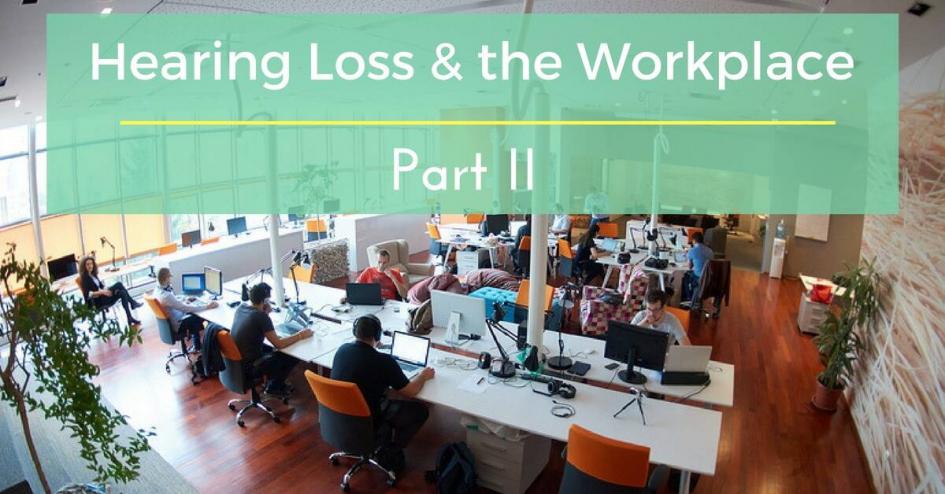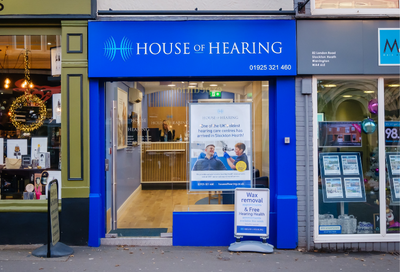
Hearing Loss & the Workplace, Part Two
Feb 25, 2017
Hearing Loss and the Workplace: Part II
In the last post, we discussed the challenges people with hearing loss can face at work and the importance of getting tested and treated for hearing loss. This time, we’ll take a closer look at reasonable adjustments – changes that can be made to the workplace – and support that employers can offer their employees to help them work more effectively.What are reasonable adjustments?
It’s your right to have equal access to the workplace. Under the Equality Act 2010, employers are obliged to make reasonable adjustments for employees with health conditions. These adjustments can include physical changes to the office or specialist equipment to help you do your job better. You shouldn’t have to cover the costs of any adjustments. This is the responsibility of the employer, and in some cases, can be funded by an Access to Work grant. Action on Hearing Loss offer work based assessments to help employers make adjustments to the workplace and identify useful equipment.Communication Support
Communication is an important part of most workplaces. Employers should provide you with communication support to help you during interviews, meetings, trainings and while on the job. Action on Hearing Loss can provide trained professionals such as lipspeakers and speech-to-text reporters to offer specialist support for employees.Changing a provision
This means changing a practice or the way things are done. For example, if an employee has difficulty carrying out a minor duty, this could be reallocated to other staff members. If staff are responsible for answering the phone, it would be reasonable to allow the person with hearing loss to be deal with written communication instead. If staff announcements are usually given across a tannoy (loudspeaker) system, these may be difficult for the individual with hearing loss to hear. It would be reasonable for the company to also send the same message via text message or email. If a person is more comfortable with face-to-face communication than phone conversations, it would be reasonable that their meetings with clients and colleagues take place in person.Physical adjustments
Changing the physical layout of a workplace can make a big difference to a person with hearing loss. For example, a person with hearing loss should be able to choose a desk facing their colleagues, so they don’t miss out on conversations and instructions. A brightly-lit workspace is important so the person can lipread when necessary. Background noise can be a major issue for people with hearing loss, so finding a desk away from photocopiers and the kitchen can be very helpful. Meetings should be held in a quiet, well-lit private room, away from general office noise. Using a meeting table that is round rather than rectangular will also help the individual to see everyone’s faces and hear more clearly.Providing Equipment
There is a wide range of hearing technologies and specialist equipment which can help people with hearing loss in the workplace. Some of these include:Visual alarms
Most workplaces use auditory fire alarms but people with hearing loss may not be able to hear these. Employers should invest in flashing-light fire alarms to keep employees safe. A flashing doorbell and telephone can also be useful.Personal listening devices
These devices help to cut out background noise and enhance speech – useful in the office, and also during meetings, conferences and staff rooms.Hearing loops
Employers could install a hearing loop at the workplace to reduce background noise. If you have to travel for business, your employer could provide a portable hearing loop for the road.Amplified telephones and hearing aid-compatible phones
These phones have excellent sound quality, loud speakerphone and ringer volumes and can be used comfortably with a hearing aid. For people who have difficulty using a phone, text relays can convert speech to text and vice versa in a conversation.Bluetooth devices
Most modern hearing aids come with Bluetooth compatibility. Bluetooth can stream sound signals such as email alerts and phone calls directly from a device to a person’s hearing aids. This can cut down the need for additional equipment.More help
Action on Hearing Loss provides a range of resources and services for employers and employees. This includes work based assessments, disability awareness training and communication support. A great resource is the government scheme Access to Work, which provides practical and financial support for employees with disabilities and health conditions and their employers. They can also provide assessments, training, and cover the cost of specialist equipment. To check your eligibility for this scheme, contact the Access to Work centre for your region. If you’d like to find out more about hearing aids or get tested for hearing loss, our House of Hearing specialists will be happy to help. Give us a call on 0131 220 1220 or pop into one of our centres for more information.House of Hearing UK
0131-220-1220
Our Clinics
All House of Hearing clinics are in town centre locations and accessible to public transport and parking. Home visits also available if mobility is an issue.


.png)
.png)
.png)

.png)
